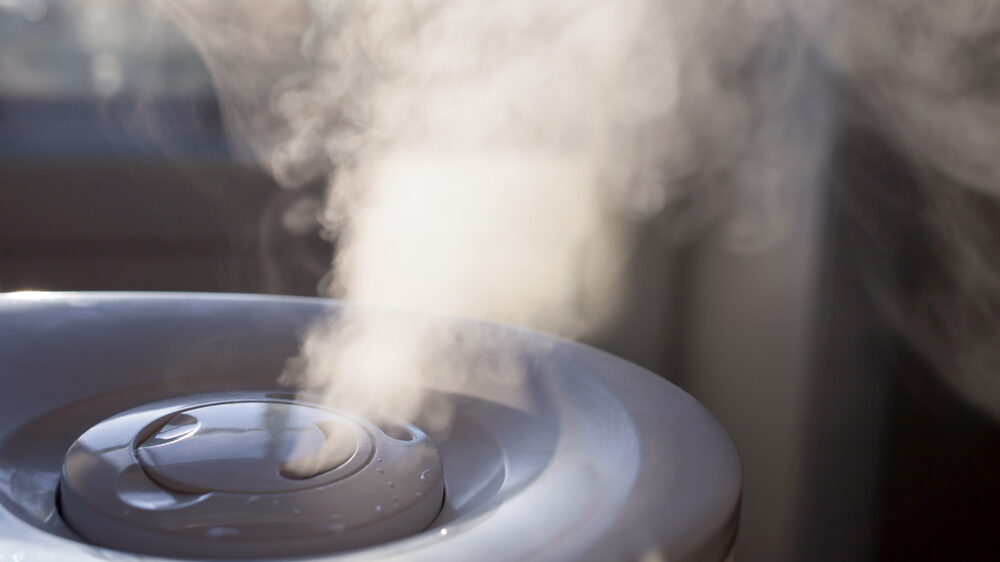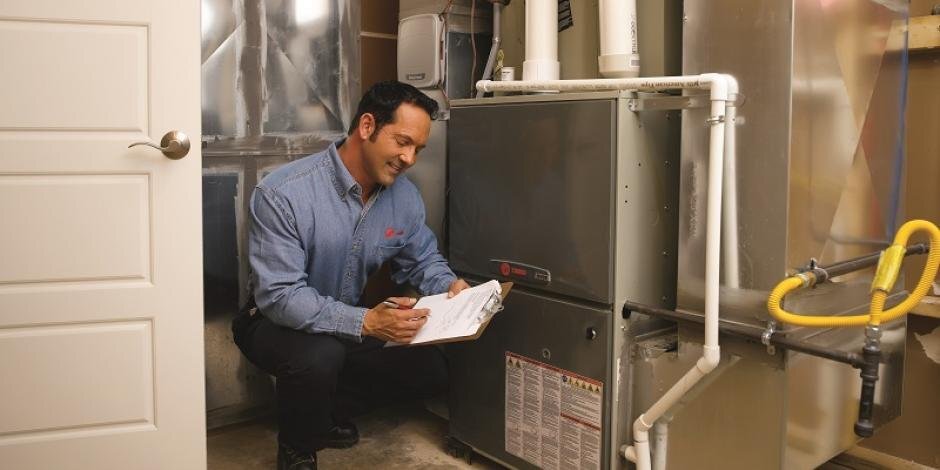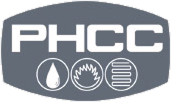
For most New Jersey homes, yes—a whole-home humidifier is the cleanest, most consistent way to fix dry winter air. When outdoor air turns cold, indoor relative humidity drops. Below ~30% RH, you’ll notice dry skin and static, creaking floors, gapping trim, and a heater that runs hard yet still feels “sharp.” A whole-home humidifier provides controlled moisture to reach 30–50% RH, evenly across rooms—no refilling portable tanks.
Why humidity matters in winter
- Comfort & calm air: Air in the 30–50% RH range feels warmer at the same thermostat setpoint, reducing perceived dryness and static.
- Protect finishes: Wood floors, instruments, and trim are less likely to crack or shrink when moisture stays stable.
- Support steady HVAC operation: With better moisture content, your air system can run more steadily rather than short, irritating cycles.
Whole-home humidifier options- which type fits your home?
- Bypass (evaporative): Uses furnace blower; simple and reliable. Good for many forced-air systems with adequate return air.
- Fan-powered (evaporative): Built-in fan adds moisture even at lower blower speeds; useful where static pressure is tight.
- Steam: Fast, precise moisture regardless of heat call—great for larger homes, zoned systems, or tight envelopes. Needs dedicated power/water quality checks.
Control matters: Install a reliable humidistat (or smart thermostat with RH) and use an outdoor temperature sensor where appropriate to prevent window condensation.
Safety note—moisture is powerful, so control it
- Stay near 30–50% RH in winter. Higher RH against cold glass or poorly insulated walls can condense and damage finishes.
- Maintain per manufacturer: replace water panels or steam canisters, clean drains, and verify valves to avoid scale and microbial growth.
- Confirm airflow and static pressure are within spec so moisture distributes evenly without stressing the blower.
Whole-home vs. portable units
- Distribution: Whole-home uses ducts to reach every room; portables treat one area.
- Consistency: Automated control tracks setpoint; portables fluctuate as tanks empty.
- Maintenance: One pad/canister and a drain vs. multiple portable tanks to fill and sanitize.
How we size and set your whole-home humidifier
- IAQ Evaluation: We measure current RH, inspect windows/insulation, and check duct static to choose bypass/fan-powered/steam.
- Right-sizing: Match output (gal/day) to home size, leakage, runtime, and comfort goals.
- Smart control: Add outdoor sensor or dew-point logic to prevent condensation on cold nights.
- Commissioning: Verify RH rise, drain flow, and safety shutoffs; set maintenance reminders.
In Mercer and Middlesex counties, single-pane or older double-pane windows get chilly. We tune RH to avoid fogging/condensation while keeping comfort high.
Controlled humidity is a quiet upgrade you feel every day all winter.
Frequently Asked Questions
What humidity should I aim for in winter?
About 30–50% RH. It balances comfort and condensation risk; very cold nights may require a slightly lower setpoint to protect windows.
Bypass, fan-powered, or steam—what’s best?
Bypass is simple/low-power, fan-powered helps when airflow is limited, and steam is fastest/most precise. We select based on home size, duct static, envelope, and comfort goals.
Will a humidifier cause mold?
Not when properly controlled and maintained: replace water panels/steam canisters, keep drains clear, and set RH to match outdoor temps.
Do I need a humidifier if I already have a heat pump?
Likely, yes. Heat pumps don’t add moisture. Correct RH improves perceived warmth and overall comfort at the same temperature.








